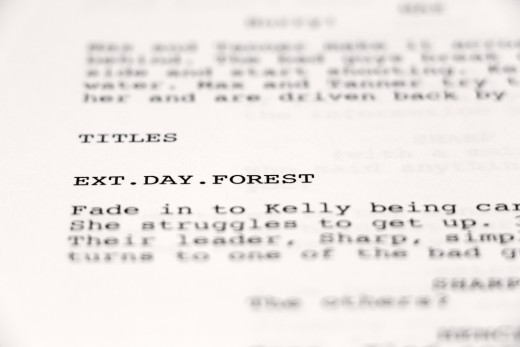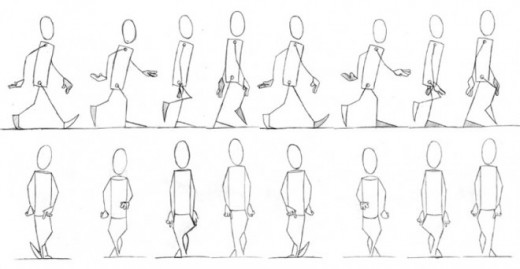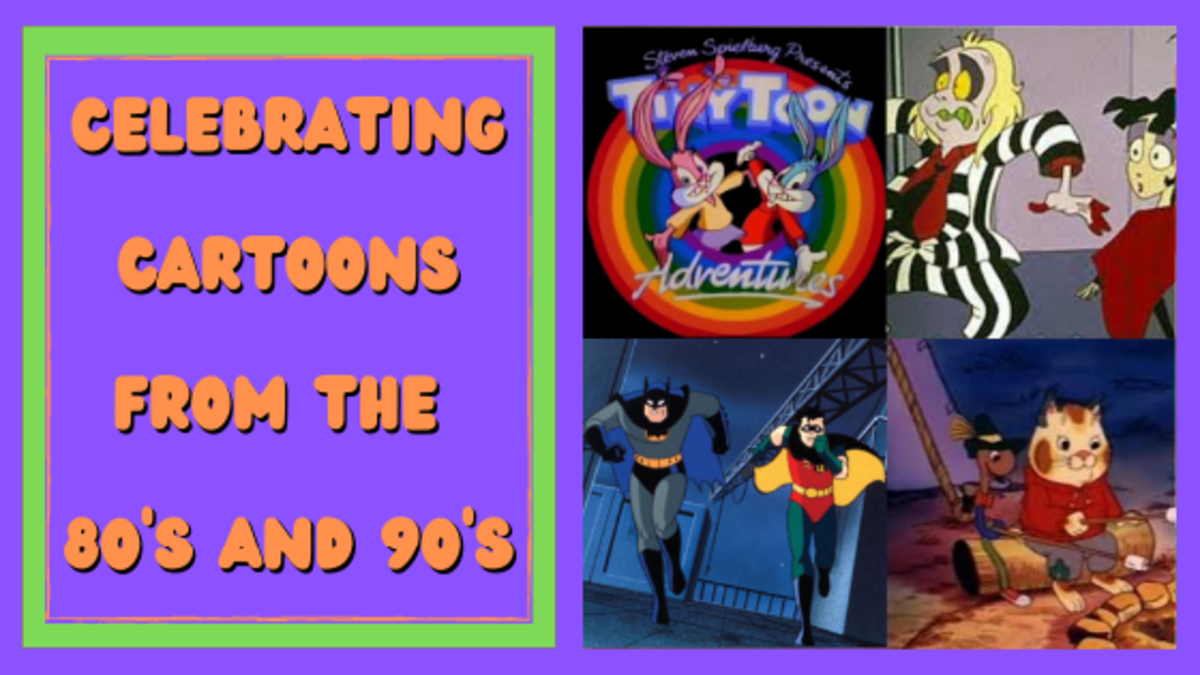Animated TV Writing
Welcome to the best job in the world!
Writing for television is unlike any other writing. You have a few million factors to deal with, from telling a story that lends itself to the camera to pleasing a number of people from show runners to network heads. When dealing with animation writing, add to the list the factors of visual storytelling, visual style and "cartoon" humor, not to mention the fact that your show has to be more interesting and different from anything else ever created, yet similar enough for the audience to catch on pretty quickly.
For those of us who want to get into animated television writing, there are many things to consider. Storytelling, character development, back story, writing visually and choosing an audience are just a few. Here I will detail the essentials of developing your own TV show idea, primarily an animated comedy series.

Telling A Story
Storytelling is the most important part of writing for any medium. When telling a story, you need to provide a great premise, carried out by great characters, all taking place within a great structure. A moral or underlying message is also useful to give the audience the most impact and make your story memorable, though it isn't always required.
One of the toughest (and most important) areas of writing is coming up with story ideas. Writer's block is bad enough, but what do you do when you can't even begin? Don't try too hard. Like cramming for a test, forcing yourself to come up with great story ideas will only lead to more frustration.
Try reading the blogs of your fellow writers for some inspiration. Screenwriting Goldmine is a good blog for learning about the process, and the writer even offers an e-book with a lot of detailed information on starting your writing career.
There are many writing styles and many ways of telling a story. Through all the movies and TV shows over the past 100+ years, some standard storytelling tactics hold true. Most great stories follow the same basic story structure.
- A hero is established and he or she falls into a bad situation.
- The hero can brush it off or dive in, and he usually goes for the latter (if he didn't the story would end right there, wouldn't it?)
- Next, he goes through some trials and tribulations, winning some battles and losing others, until the villain gets the upper hand.
- Finally, the hero figures out a great way to solve all his problems, steps up and defeats the villain once and for all.
- Now his life is back to normal and he has grown as a person.
Almost every book on screenwriting will give you a very close story structure to this, along with more explanation to each step. Save the Cat is a great resource for writing, especially for story structure. All of the points above can be broken down into smaller bits and are clearly laid out in the book. Although meant for film writing, the tips in Save the Cat are perfect for any screen writing.
One website claims there are seven moments that will captivate your audience and need to be in any script. It could be true, but the above suggestions always felt right for me.
Aspriing writers...
Have you written any spec scripts or original series episodes?
Tone and Mood
Setting the right tone or mood for your story is very important. Are you
writing a happy story or a sad script? What kind of comedy will be
used? Is this a light farce or a striking social commentary? Believe it
or not, you can create great commentary on any topic while maintaining
an overall comedic style. Just look at shows like South Park and The
Daily Show.
Comedy comes in a wide variety of styles. Slap stick, dead pan, gross out humor and many others. The book Comedy Writing Secrets
by Melvin Helitzer is a fantastic resource of information on finding
your comedic voice for all kids of humor writing, from TV to film to
editorials to novels and stand up comedy. No matter the medium, it's very possible to transfer any comedy to another medium if you know what you're doing.
Consider the level of action and interaction you will include in your
show. Animation lends itself very well to action scenes, so take
advantage whenever possible. As the saying goes, "Show, don't tell".
While showing is important, the audience does need to know what's going
on and some things are best explained in words. Be sure to create some
witty back and forth dialogue between characters when words need to be
spoken. The unique way your characters work with (or against) each other
makes your TV show special and allows your stories to be carried out in their own unique way.

Writing Comedy
Comedy is the most common type of animation, any my personal favorite. But how do you create good comedy? Luckily, TV show
writers don't need to write jokes on the spot, but they do need to
write the best jokes possible for their show. A great place to look for
inspiration is watching your favorite TV shows (live action or animated)
and notice the jokes that make you laugh the most. Ask yourself "Why is
that so funny?" and you will soon figure out what works for you. Once
you figure out your favorite joking styles, it is much easier to get
moving in the right direction.
Word play is always a good way to get a laugh in any script. People love
to watch characters interact with one another and rip on each other for
any reason. Using a play on words, a pun or any type of word play can
greatly add to the comedic feel of your story. Comedy Writing Secrets
has a great chapter on wordplay and reforming of common phrases. They
provide a good starting point and train of through for the aspiring
humorist. A great read for anyone who is interested in comedy.
Writing Visually
As animation writer, you also serve as director. What you write will need to be interpreted by a storyboard artist so they can draw out the scenes for the animator to produce. The more direction you give, the better. The book How to Write for Animation features a lot of great info on directing within your script, and plenty of other information on, well, how to write for animation.
Consider the content of the scene when choosing camera angles. Maybe a walking scene could be shot from the side of the characters, in front of them or behind them, depending on the location of the next big visual "thing" that will appear. Think about where we just were and where we are going to help you choose the best angles for each shot. Look for storyboards online or in the book Animation Writing and Development for an idea of how they are laid out and read by the animator.

Character Development
A character's back story is very important, even if none of it ever
appears on screen. In the most basic of terms, you should decide how
your characters will act in any given situation, then ask yourself why. I
always define aspects like age, family interactions, friend
interactions, school/workplace interactions, likes, dislikes, fears,
interests and hobbies.
Dig into the primal, basic needs and urges of your characters. Some
people want recognition, others are scared of commitment, and some are
desperate for control. I always like to ask myself how the characters
would deal with a life-threatening situation. Who would step up and take
charge, who would make all kinds of demands and who would hide in the
background. Make sure you have a mix of characters in your stories and
use each one's primal instincts to develop great stories. Maslow's
classic Heirarchy of Needs is a great resource for character development.
Developing great characters includes the task of developing their
reactions to one another. Be sure to create some compatible traits in
your friend characters as well as incompatible traits between enemies.
Even better, give your enemy characters a few similar, compatible
traits, making it all that much harder for them to fight. Dealing with
this issue on a situational basis will make for stronger writing and
better stories due to the inner and outer conflicts.





